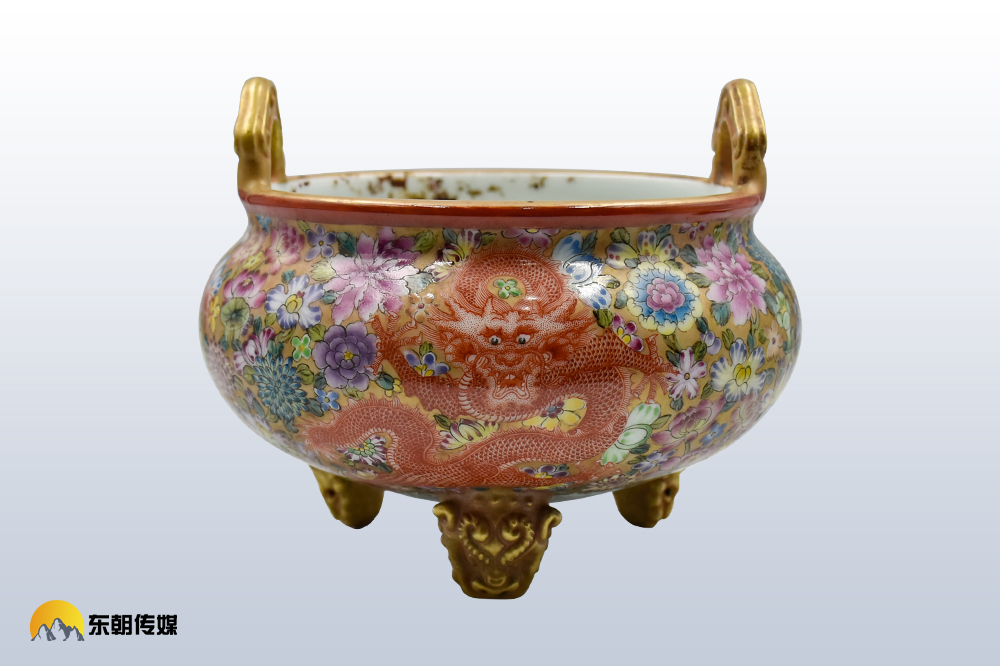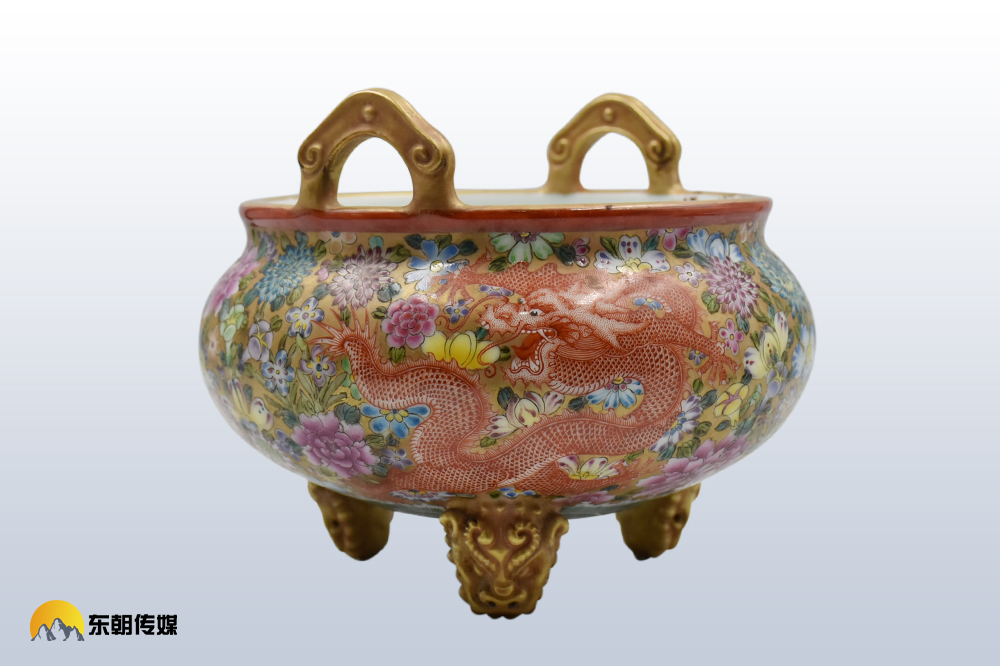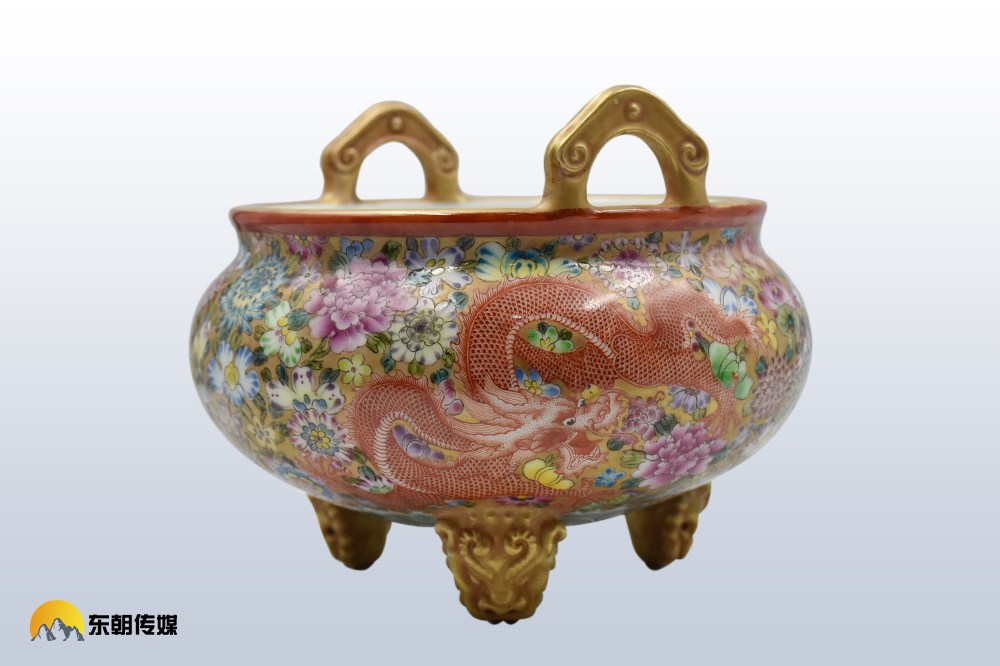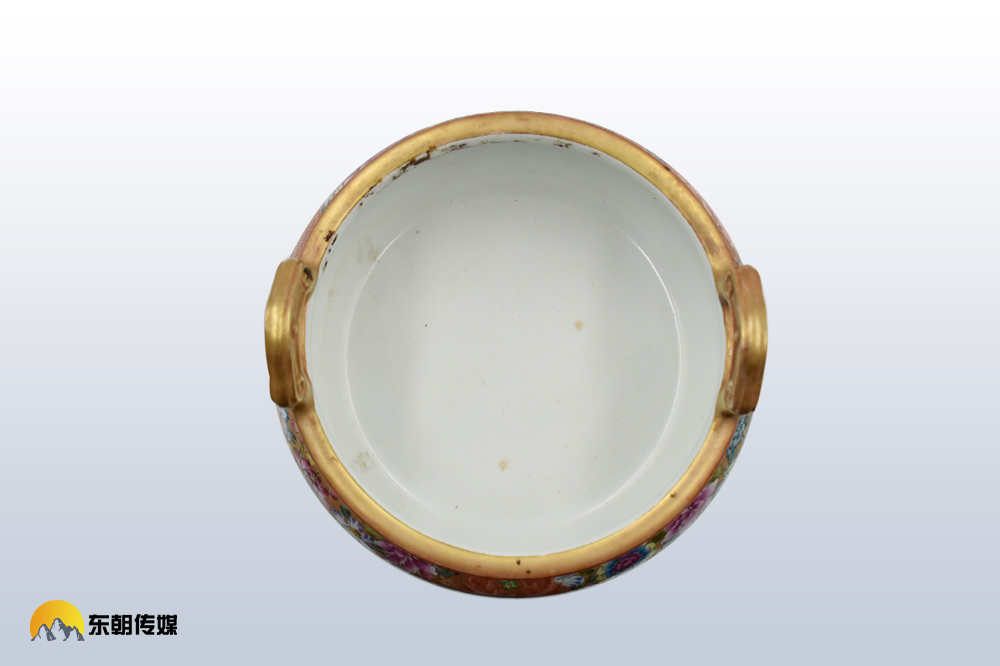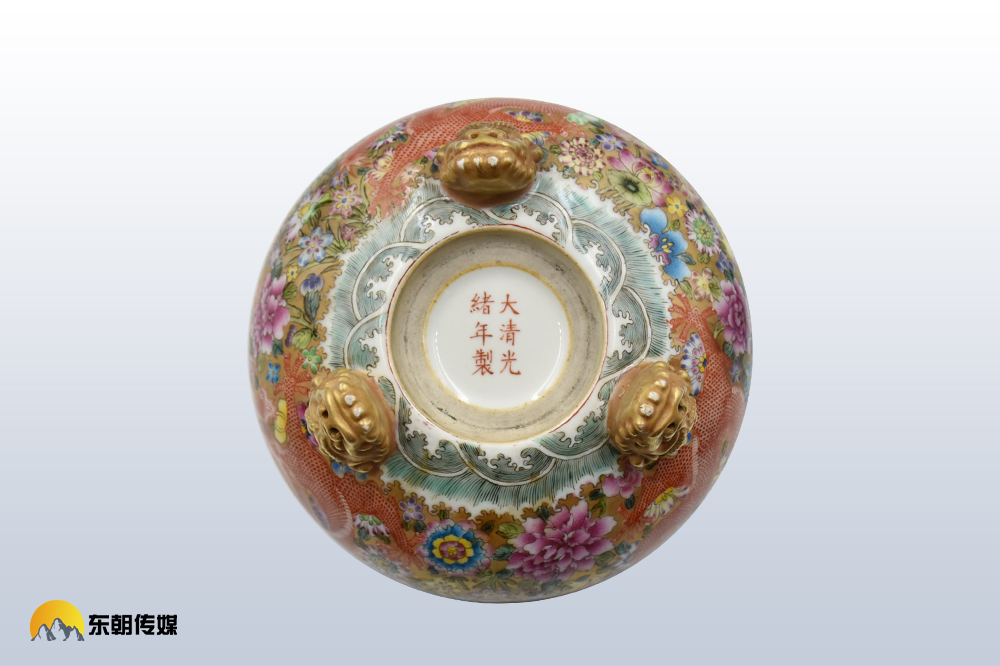古代的文人雅士把焚香与烹茶、插花、挂画并列为四艺,香炉成了他们生活中重要的物品。随着宋代瓷器的发展,瓷香炉开始出现在大宋帝王的内庭,之后瓷香炉逐渐成了上层人士高雅的把玩之物。由于瓷香炉超凡的艺术价值和历史文化价值,在收藏界一直备受青睐,尤其是宋、元、明、清等朝的瓷香炉,更是成为人们集藏的重点,市场价格稳步攀升。
The ancient scholars listed incense and tea, flower arrangements, and paintings as four arts, and the incense burner became an important item in their lives. With the development of porcelain in the Song Dynasty, the porcelain incense burner began to appear in the inner court of the Emperor of the Great Song Dynasty, and then the porcelain incense burner gradually became an elegant play of the upper class.
Due to the extraordinary artistic value and historical and cultural value of porcelain incense burner, it has been favored in the collection industry. Especially the porcelain incense burners of the Song, Yuan, Ming and Qing dynasties have become the focus of people's collection, and the market price has steadily clim
今日为大家带来的便是一款锦地描金龙纹双耳炉,底款“大清光绪年制”。
What is brought to you today is a gold-plated gold dragon pattern earring furnace, the bottom section of the "Da Qing Guangxu year system."
口径:14.5cm 底径:6.8cm 通高:13.8cm
Caliber: 14.5cm Bottom diameter: 6.8cm Passage height: 13.8cm
“锦”原为丝织物的种类名,花纹精致古雅。是汉族传统纹饰图案之一,为瓷器装饰典型纹样,系采用织锦和建筑彩绘作为装饰图案。因其常被用作辅助纹饰,起地纹作用,故又称“锦地纹”。于其上再绘花卉纹者,称锦地花,又称锦上添花,蕴含吉祥寓意。图案常以各种图形连续构成,有绣球、龟背、花卉、云纹、十字、卍字纹等。
"Jin" was originally the name of the silk fabric, and the pattern is exquisite and quaint. It is one of the traditional patterns of the Han nationality. It is a typical pattern of porcelain decoration. It is decorated with brocade and architectural painting. Because it is often used as an auxiliary ornament, it acts as a ground grain, so it is also called "Jindi pattern".
The person who painted the flower pattern on it, said that the brocade flower, also known as the icing on the cake, contains auspicious meaning. The pattern is often composed of various patterns, such as hydrangea, turtle, flower, moiré, cross, and stencil.
描金是金彩装饰方法之一,描金是用本金(金粉)或亮金(金水)在瓷面上描饰装饰纹样或配合其他装饰作边线或金地使用。清代工匠们对于金彩的运用,突破了明代单色地上描金的手法,达到了陶瓷装饰更加金碧辉煌的艺术效果。清康熙朝,在彩瓷上大量施金色,以后的雍正、乾隆朝施金技法更加广泛,直至道光朝除了白地粉彩器外,还在各种色地的开光粉彩上采用描金工艺。
Gold is one of the golden decoration methods. The gold is painted with gold (gold powder) or bright gold (gold water) on the porcelain surface or with other decorations for the edge or gold. The use of gold color by the craftsmen of the Qing Dynasty broke through the techniques of gold painting on the monochromatic ground of the Ming Dynasty, and achieved the artistic effect of more magnificent ceramic decoration.
In the Kangxi Reign of the Qing Dynasty, a large amount of gold was applied to the colored porcelain. Later, the techniques of the Yongzheng and Qianlong dynasties were more extensive. Until the Daoguang Chao, in addition to the white ground pastels, the gold painting process was also used on the opening pastels of various colors.
罗先生此款锦地描金龙纹双耳炉,下承三足,炉身绘有三条龙纹,大气磅礴;龙的形象作为帝王象征,是一种权贵、地位、财富、智慧的综合体现。从作为图腾崇拜的对象到发展为具有特殊意义的龙纹图案,无论从哪个方面看,龙都代表着中国人的一种精神信仰。而龙纹文化在皇权与民间广泛流传,则体现出了中国龙文化的博大与精深。
Mr. Luo's gold-plated dragon-eared ear furnace is made up of three dragons. The body is painted with three dragons and the atmosphere is majestic. The image of the dragon is a symbol of the emperor. It is a comprehensive expression of power, status, wealth and wisdom.
From the object of worship as a totem to the development of a dragon pattern with special significance, the dragon represents a spiritual belief of the Chinese no matter which aspect. The dragon culture is widely spread in the imperial power and the folk, which reflects the broad and profound Chinese dragon culture.
瓷质精细,釉色肥厚,光润匀净,双耳自然连结,高雅之中不失秀逸,底有“大清光绪年制”款。其构图繁密规整,华丽精致,整体图案色泽鲜丽,颜色夺目艳而不媚,极具艺术魅力。
The porcelain is fine, the glaze is thick, the smoothness is smooth, the ears are naturally connected, and the elegance is not lost. The bottom is the “Da Qing Guangxu Year System”. The composition is dense and regular, gorgeous and exquisite, the overall pattern is bright and colorful, the color is dazzling and unattractive, and it is very artistic.
清代统治者入主中原后,以“孝”治天下,祭祀风气盛行,景德镇一代名师巧匠以其聪明才智,将瓷香炉的制作推向历史高峰。如果您有意收藏以上的藏品,欢迎随时联系广州东朝文化!
After the rulers of the Qing Dynasty entered the Central Plains, they ruled the world with "filial piety" and prevailed in the rituals. The masters of Jingdezhen, with their wisdom and wisdom, pushed the production of porcelain incense burners to a historical peak. If you are interested in collecting the above collections, please feel free to contact Guangzhou Dongchao Culture!
